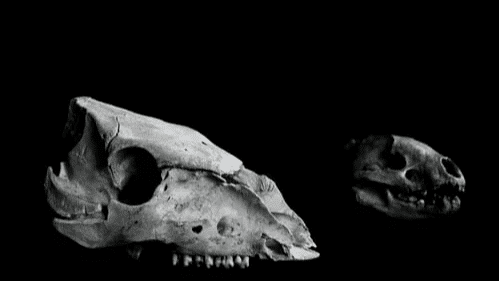A 13 million-year-old
fossil of a newly discovered ape species, which is the earliest known ancestor
of the modern-day gibbon, was excavated by an international team of researchers
in Uttarakhand.
Published
in the journal Proceedings of the Royal Society B, the findings of the
excavation plugs a major gap in the fossil record of apes and throws light on
when the ancestors of today’s gibbons migrated to Asia from Africa, according to PTI.
The fossil,
which is a complete lower molar, belongs to a previously unknown genus and
species (Kapi ramnagarensis) and is the first new ape species to be unearthed
at the famous fossil site of Ramnagar in almost a century.
Also Read: 313 million-year-old fossil footprints found at Grand Canyon
The team of
researchers, including those from Arizona State University in the US and Panjab
University in Chandigarh, were climbing a small hill in an area where the
fossil jaw of a primate had been found a year ago.
During a
rest break, something shiny in the ground caught their eye.
“We knew
immediately it was a primate tooth, but it did not look like the tooth of any
of the primates previously found in the area,” Christopher C. Gilbert from the
University of New York said.
“From the
shape and size of the molar, our initial guess was that it might be from a
gibbon ancestor, but that seemed too good to be true, given that the fossil
record of lesser apes is virtually nonexistent,” he added.
Gilbert
said there are other species of primates from that time that are known and
no gibbon fossil had been previously found anywhere close to Ramnagar.
Since the fossil’s
discovery, in 2015, the researchers carried out years of analysis and comparison
to verify that the tooth belonged to a new species and to determine its place
in the ape family tree.
The molar
was photographed and CT-scanned and samples from living and extinct species of
apes were compared to note important differences and similarities in dental
anatomy.
“What we
found was quite compelling and undeniably pointed to the close affinities of
the 13-million-year-old tooth with gibbons,” said Alejandra Ortiz from the Arizona
State University.
“Even if,
for now, we only have one tooth, and thus, we need to be cautious, this is a
unique discovery. It pushes back the oldest known fossil record of gibbons by
at least five million years, providing a much-needed glimpse into the early
stages of their evolutionary history,” Ortiz said.
Also Read: The quest to find signs of ancient life on Mars
The researchers
highlighted that the 13-million-year-old fossil is contemporaneous with other
well-known great ape fossils.
This points
to the fact that the migration of great apes, including orangutan ancestors and
other lesser apes from Africa to Asia happened around the same time and through
the same places, the researchers said.
“I found
the biogeographic component to be really interesting,” Chris Campisano from the
Arizona State University said.
“Today,
gibbons and orangutans can both be found in Sumatra and Borneo in Southeast
Asia, and the oldest fossil apes are from Africa.”
“Knowing
that gibbon and orangutan ancestors existed in the same spot together in
northern India 13 million years ago, and may have a similar migration history
across Asia, is pretty cool,” Campisano said.






